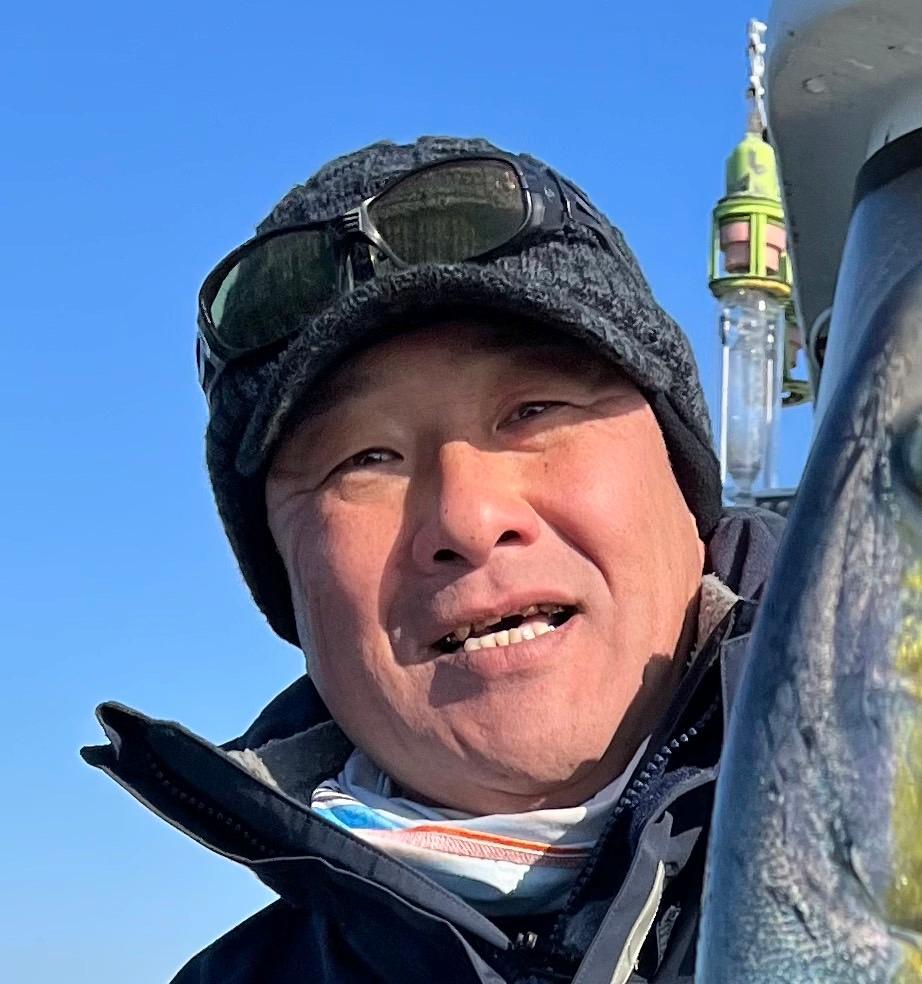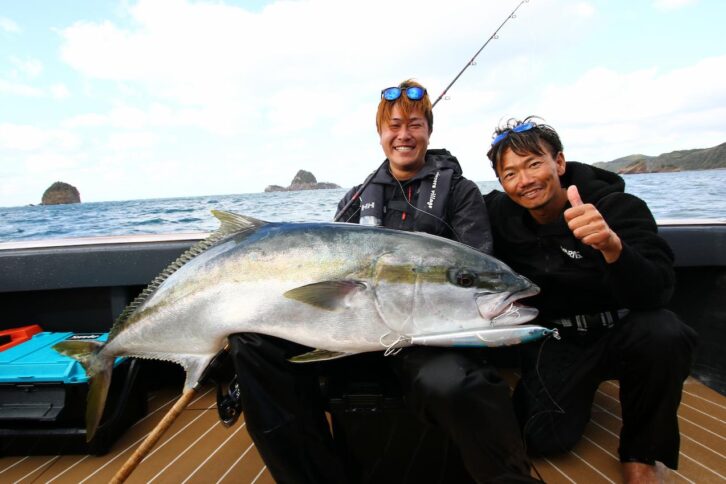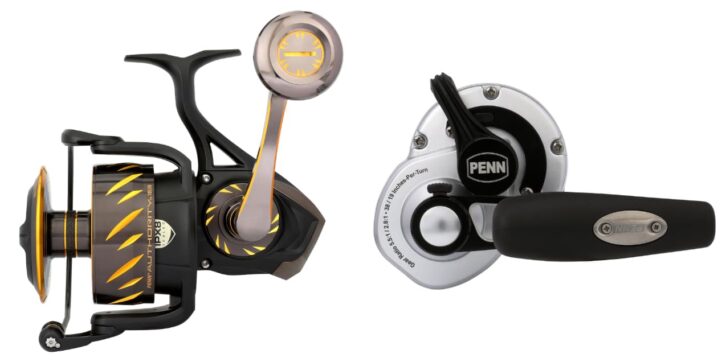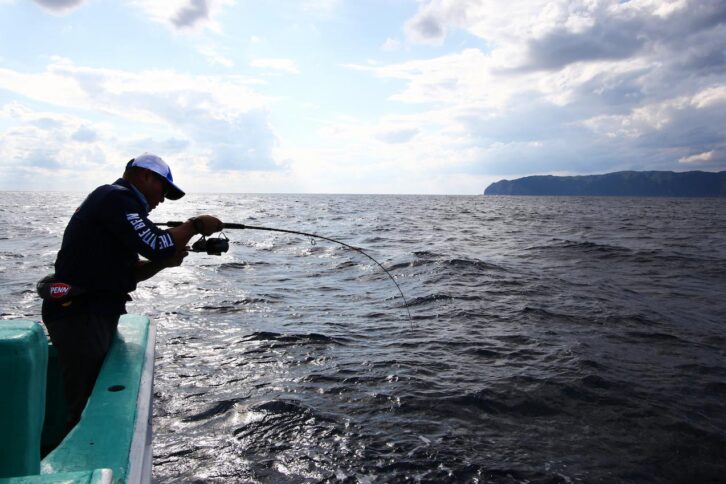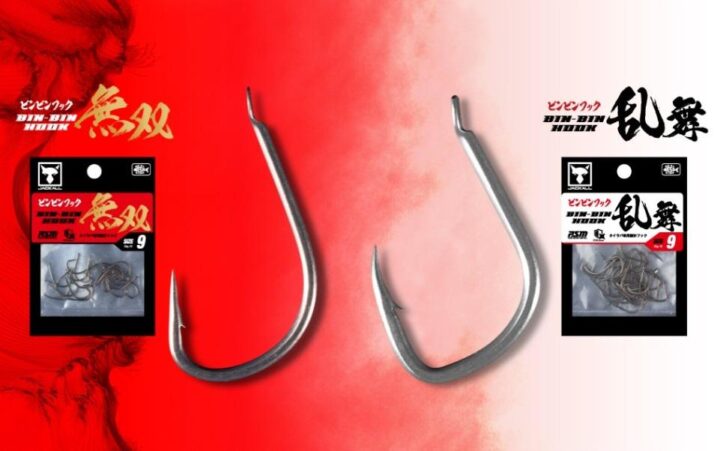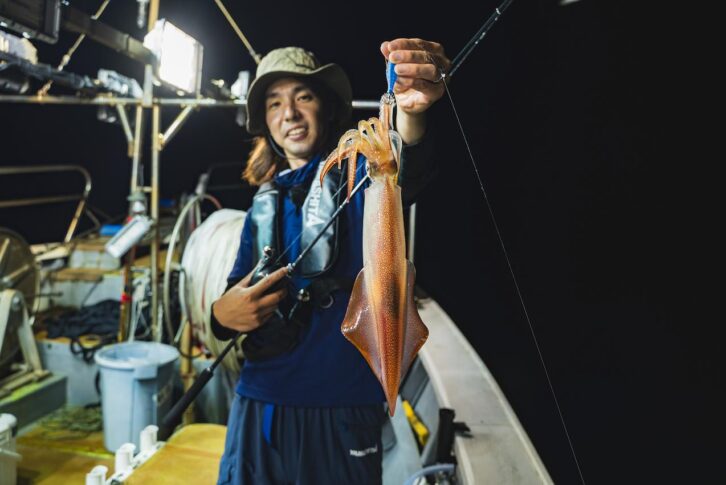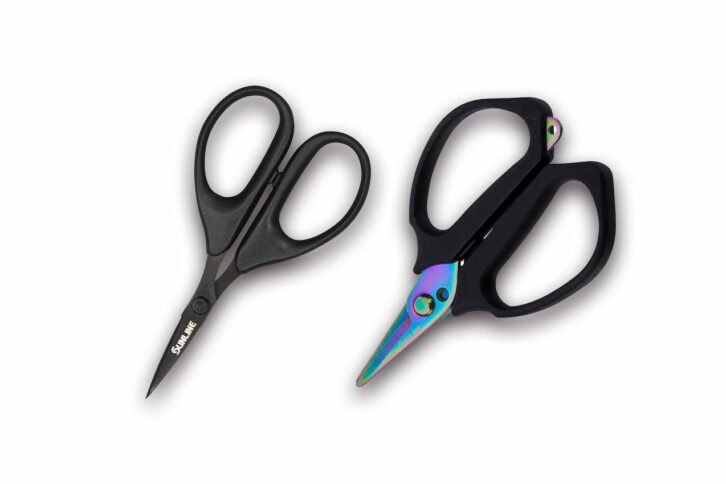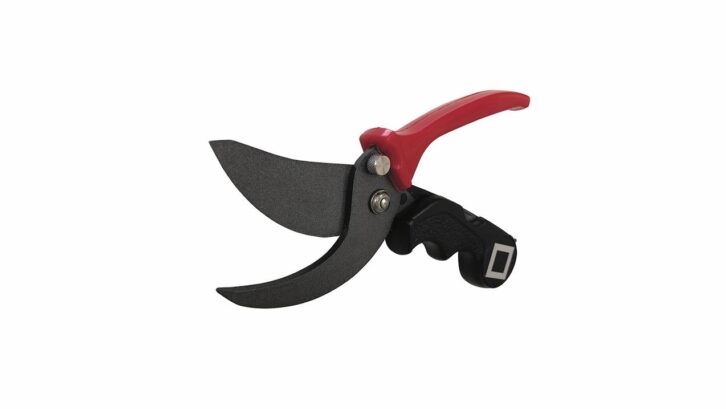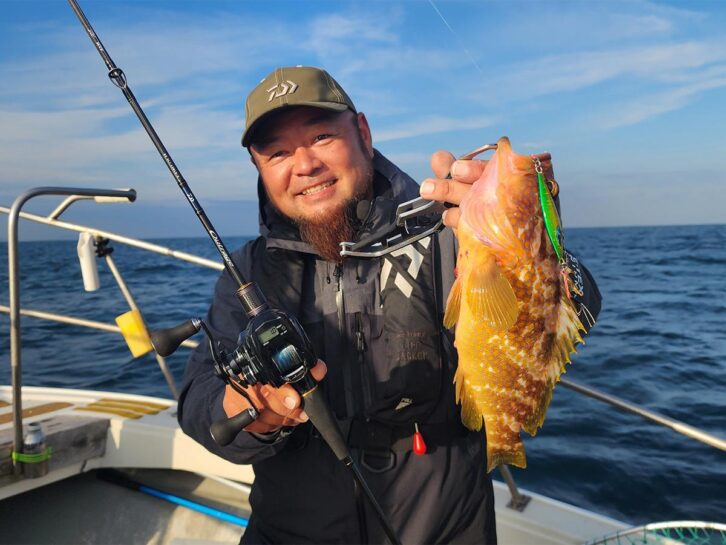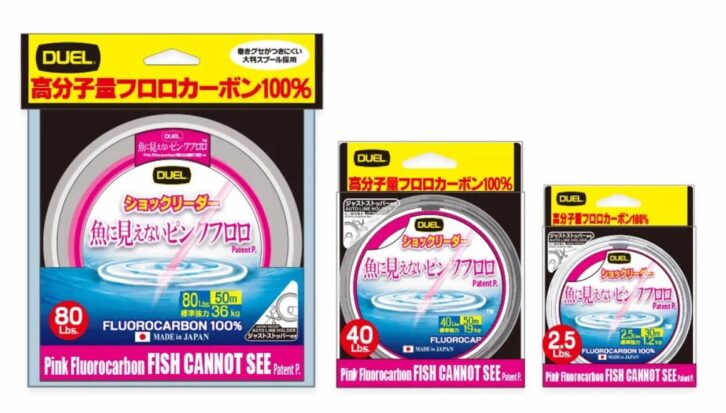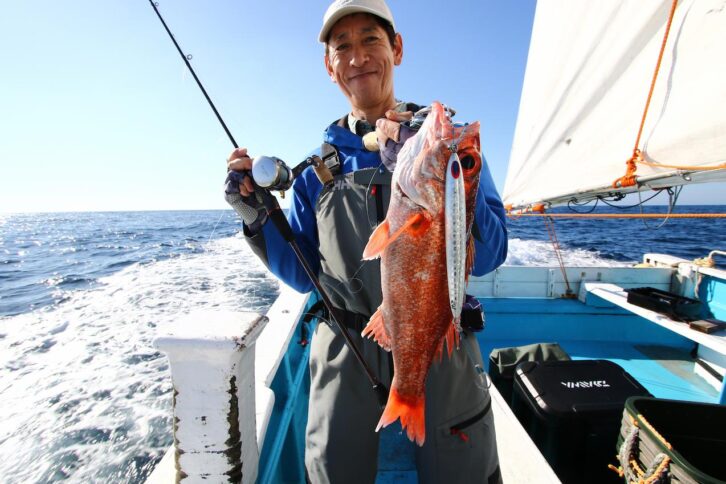Offshore World vol.20
Offshore Actual Fishing. Tsushima, Nagasaki in Spring Spring sunfishing will soon be in full swing! The strategy and the high potential of Tsushima that I realized.
In my previous article, I reported on midwinter sunfish fishing on Tsushima Island in Nagasaki Prefecture in mid-January, but I returned to the island in late March when the cherry blossoms were in full bloom. This time, we tackled the issues of how the sea conditions had changed from midwinter to spring and how to respond to those conditions to target the fish. The Genkainada Sea, my home ground, and the waters of Tsushima in Nagasaki Prefecture. In this issue, we would like to report on the situation.
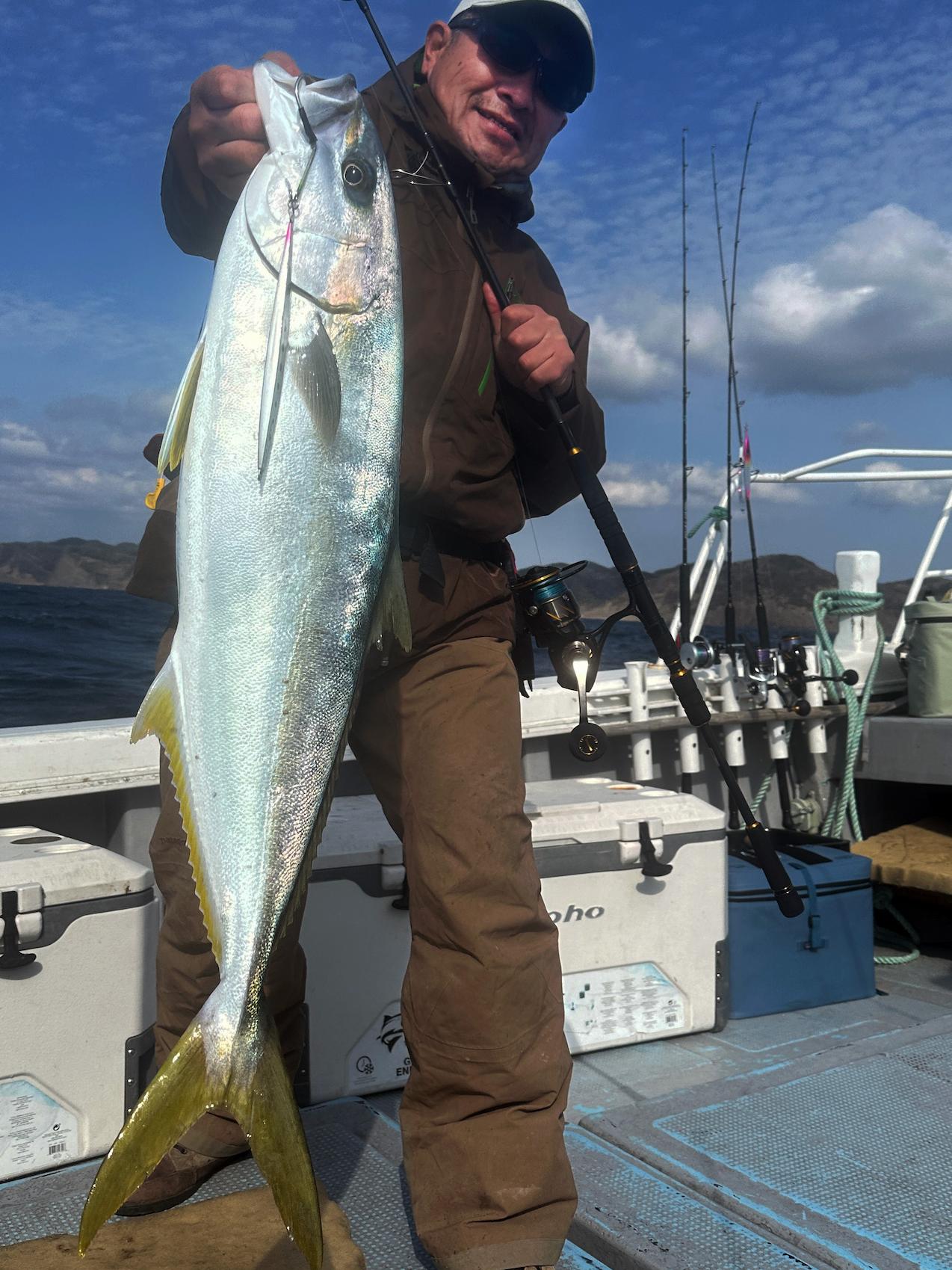
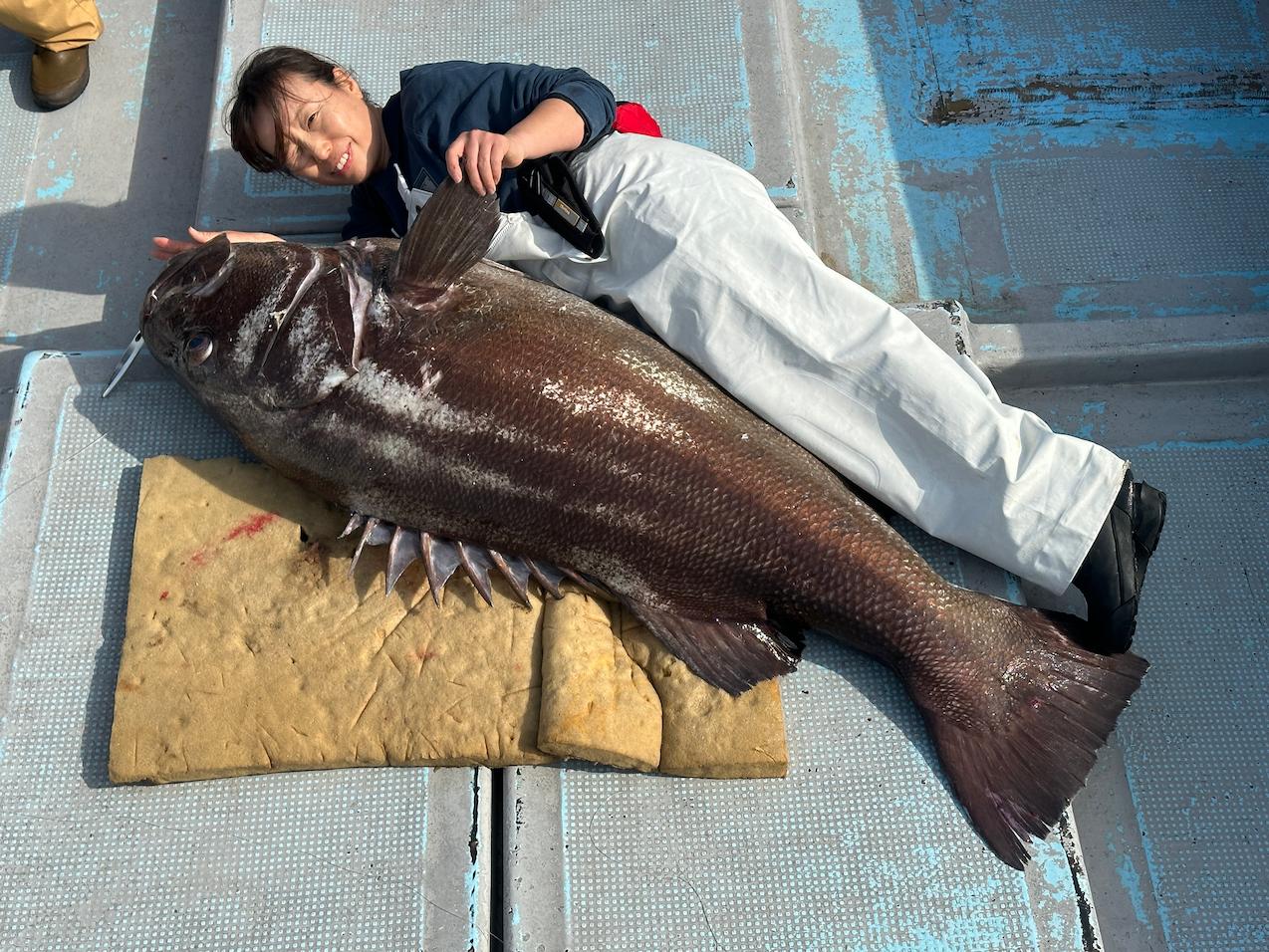
INDEX
Tsushima, Nagasaki. The smell of a familiar field.
The cherry blossoms in Tsushima have begun to bloom. Academic students have completed their graduation ceremonies and are heading for new beginnings. The sea is also looking forward to seeing how the familiar waters of Tsushima have changed since midwinter. Spring weather is a woman’s heart. I don’t know who said it, but this is the time of year when anglers are also swept away by the fickle weather. Before leaving for the trip, I counted down the weather every day. Four days before the fishing trip, the forecast was for three days of doom and gloom; three days before, one day was predicted to be calm; two days before, two days were predicted to be fishable; and so on. The weather changed every day, and we were always at the mercy of the weather forecast. On the day of departure, looking over the Genkainada Sea from the plane, the wind and waves looked white, but I could sense that the fishing was good enough. The weather was spring-like, but the seven anglers made it to Tsushima without incident.
This time, half of the anglers were seasoned veterans and the other half were first-timers. It was an interesting combination. The boat was the usual Haruyo Maru. We were targeting sunfish and yellowtail by casting and jigging. We arrived at Tsushima by the second morning boat and left before noon. The wind was blowing from the east on the first day, so we headed to the west side of Tsushima.
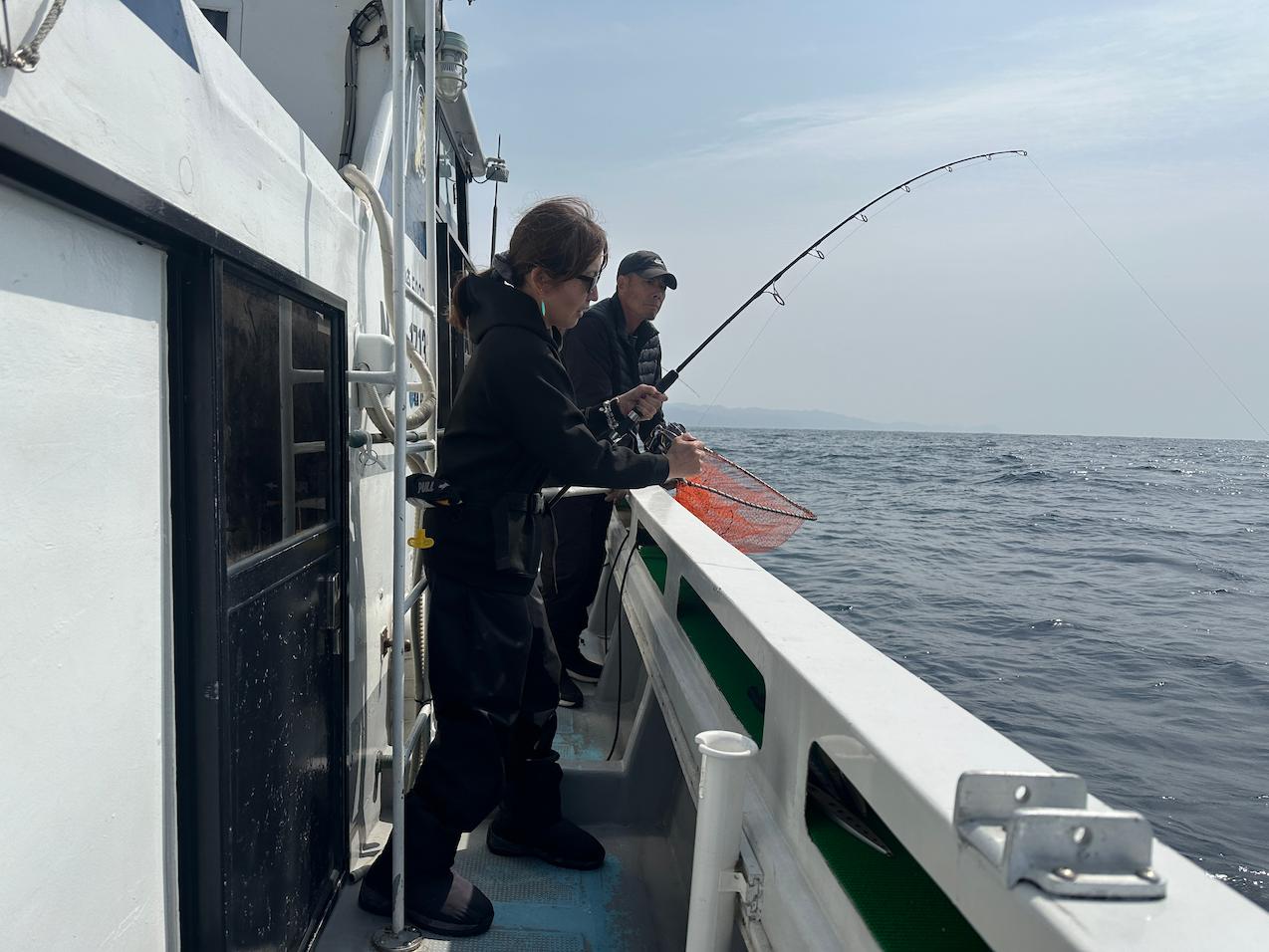
The group this time consisted of half veteran anglers and half anglers who had never fished on an expedition. She was the first participant, and she was eager to take on the challenge.
How to jig around fish reefs and rapids.
No swell, clear skies, and a solid calm. The anglers on the boat were feeling good about these special conditions. We started from the reefs off the west side of the upper Tsushima Misono. In mid-winter conditions, anglers would search the reef with an eye on the bottom, but in spring, anglers need to search the middle layer of the reef as well.
Everyone drops a jig on the reef. The fishing method is to drift the boat in the Doterra current, so it is important to keep a good layer of water to fish in. The boat was moving slowly. The tide was flowing well. This could be grasped naturally by jerking the jig. The reefs were responding, but the sunfish were not using their mouths. We gave up early and moved to the rapids.
We drifted along the rapids at a depth of around 70 meters. Waterfowls started to make noise, and we imagined fast-moving fish were moving right and left on the surface of the water. It is a game of sensing the atmosphere of spring. In this situation, we need to operate the metal jig in a way that it probes widely through the layers of the water. Sometimes boils occur on the surface of the water. However, I can’t cast the jig because the bird is not fixed. I tried to probe the jig layer to the upper layer of the water. My prediction was right on target. I was satisfied to hit a sunfish that was chasing a bait by theoretically constructing a fishing line. The sea is becoming like spring. After that, we alternately targeted fish reefs and around rapids. The first day was blessed with good weather and everyone concentrated on the spring fishing day.

Tatsuya Kato is a veteran of sunfishing. He read the situation and caught them well.
Female anglers and giant fish
That night, there was a blast of wind and pouring rain. The rain kept hitting the glass of the hotel throughout the night. On the second day, after delaying our departure time, we headed east offshore. We started from off Kami-Tsushima Hitakatsu. The night storm was no longer felt at all. The fishing would not have been viable if the day and night were reversed. This is the spring season. The climate changes with little timing. I really felt the difficulty of the change of season.
On the reef off Hidakatsu, small sunfish and yazu (inada) started to hit the reef. We searched the bottom of the reefs with an eye on the bottom, but the results were not good at all. Captain Takuya Haruta became impatient with the lackluster fishing and calculated the time of the tide, and made his move. The sea was perfectly calm, so he made a big move. He headed for the Ganzaki area. The anglers were as eager to take a chance as we were.
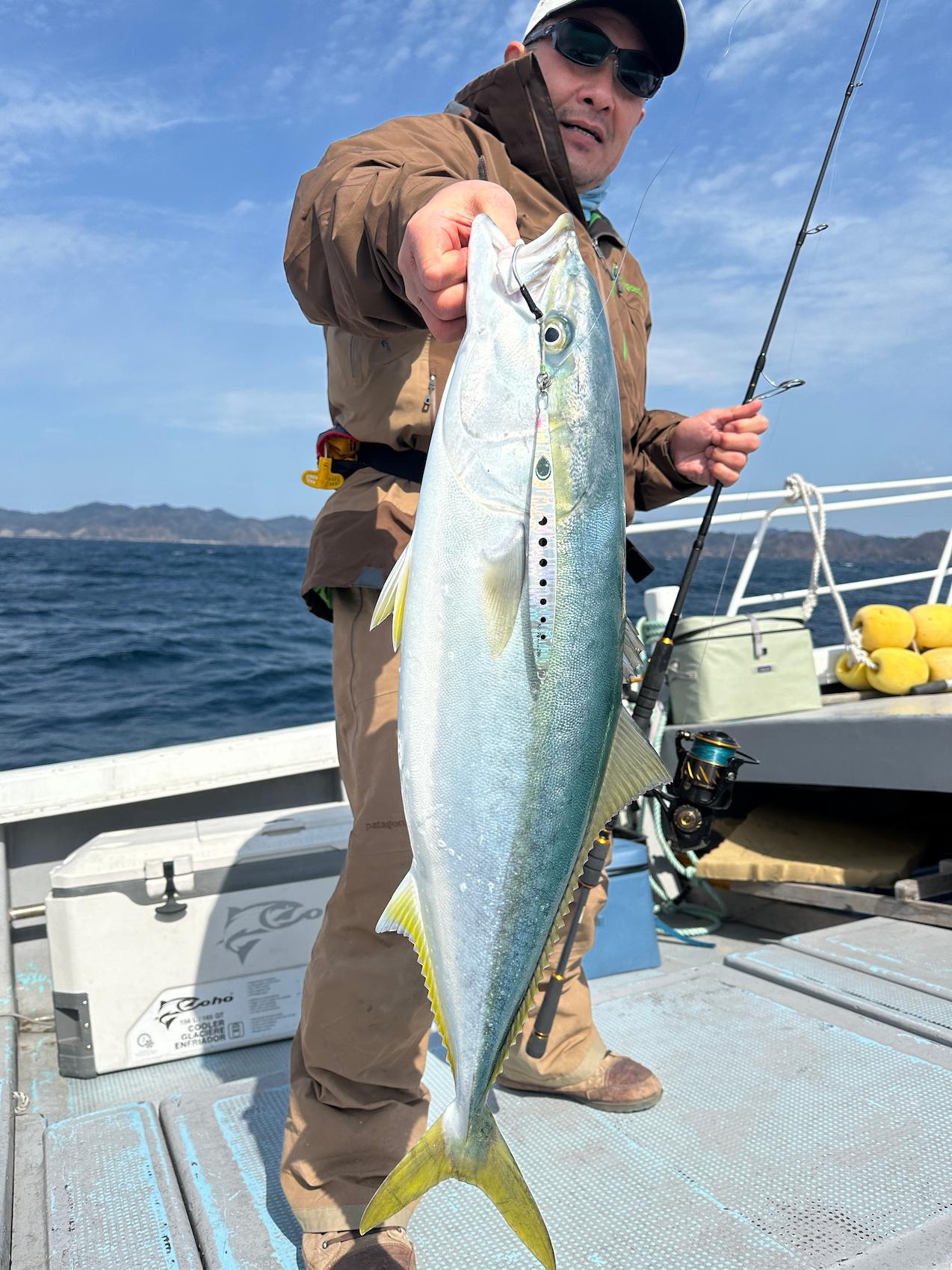
On the reefs, yazu are hitting in large numbers. The key is how to get the sunfish to use their mouths without getting the yazu to bite.
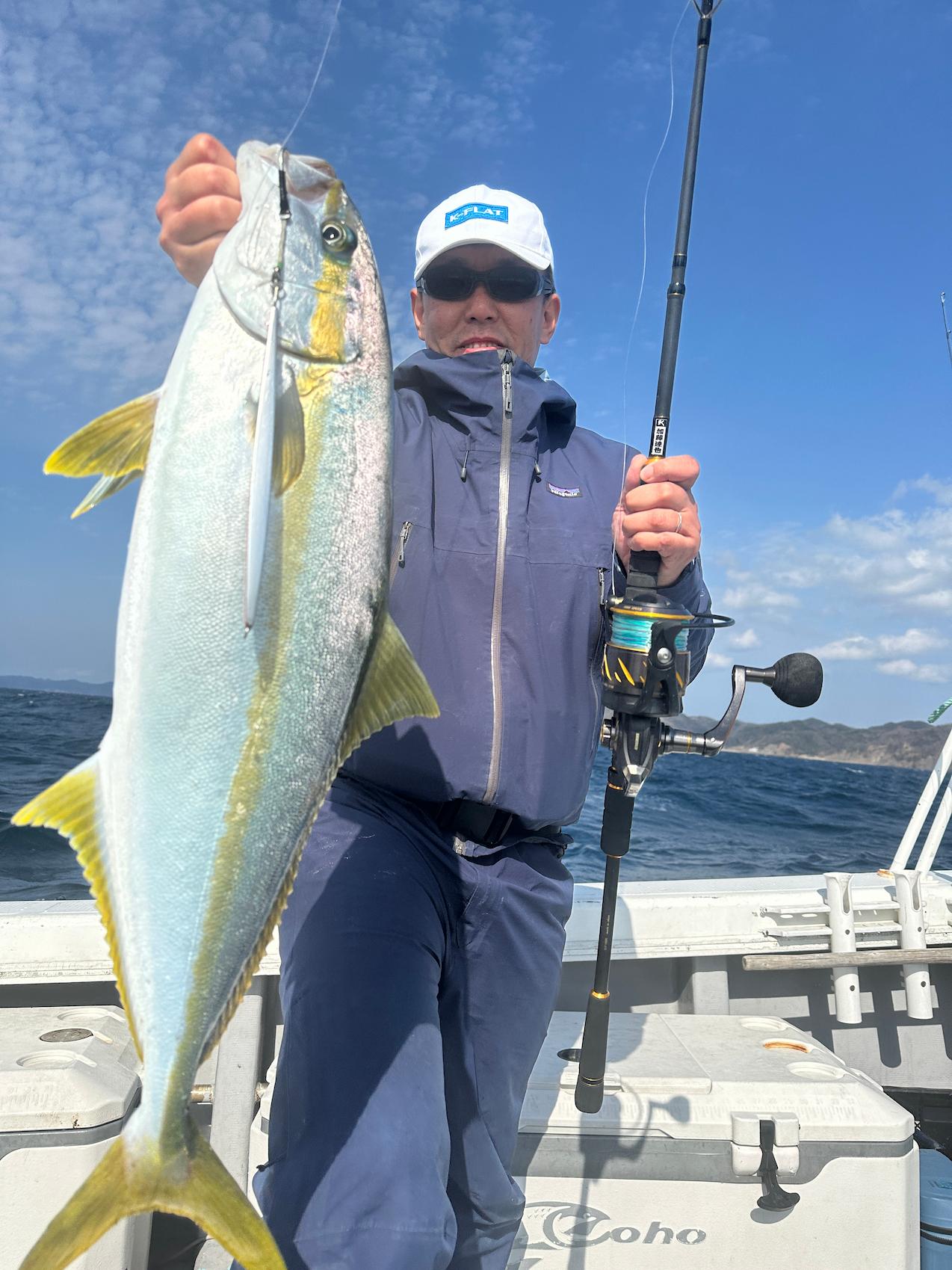
Mr. Kato successfully fended off the onslaught of yazu and ensured that he caught the sunfish.
The depth was 130 m. The bottom was mixed with red mackerel (hachibiki), but the yazus were using their mouths more than expected. The bites continued to come in until the anglers became bored. Incidentally, an old fishing buddy of mine was on the same boat with us this time. Reiko Morino, who married into the Moriryu Maru at Izu Ajiro Port. She is now the landlady of the boatyard and moves around the harbor every morning. She joined the tour because she wanted to learn about sunfish. The woman who is now the landlady of the shipyard received a tremendous bite.
I myself have never seen such an intense bite. The bite was so shocking that I couldn’t help but watch. The line was pulled out, and for a moment, it stopped moving at all, and I desperately tried to reel in the reel handle, which could not be reeled in for 10 or 15 minutes. Captain Naomi Haruta advised us to take it slow. Take your time, take your time,” he said, gently encouraging Reiko. He gently encouraged Reiko.
After 30 minutes had passed, the fish began to run again. We were back to square one, but from that point on, we slowly began to be able to reel in the fish half a turn at a time. The rod was a PENN Torque-63M KEI Hiramatsu model. He continued lifting without pushing too hard. I kept reeling in the rod even at half a turn of the handle. Then, with about 20 meters to go, the angle of the line changed under the tide and the fish began to float. Then I saw a huge shadow of a fish. We prepared to take in the fish with a huge net and gaff. Captain Takuya put the head in the net, I held the frame of the net, and Captain Naomi struck the fish with the gaff.
The catch was a giant bullhead. It was huge. The crew on board was excited to hear that it looked to be the same size as a 90-kilogram Ishinagi that the Haruyo Maru had previously caught while swimming. Naturally, this was the first time I had seen this size. She caught it by herself without any assistance from jigging, using Penn Torque-63M KEI Hiramatsu model with PE No. 4, Sunline Tunagito 70lb leader, and K-FLAT KEI-JIG 235g hook, which firmly penetrated the mouth of the bullhead. A huge bullhead eel that was so huge that it was frightening. After returning to the port, we weighed 80 kg. Our fishing trip to Tsushima, where we had entered to enjoy spring sunfish, ended with a record-size bullhead eel weighing 80 kg.

Reiko Morino, the proprietress of Moriryu Maru in Ajiro Port, Izu, and a long-time acquaintance of Hiramatsu, caught a surprisingly sized rock eels.
Hiramatsu’s Must-Have Patterns
Once again, we chased sunfish, this time by casting and jigging, depending on the conditions. The wind is the biggest concern in spring fishing. Knowing this makes a big difference in how you fish. When the wind blows, you need to keep in mind what you need to be aware of and what you need to keep in mind when fishing.
Even in conditions that normally do not allow for much casting distance, if you cast a plug in a tailwind, the lure will fly well. If you are not always aware of where you need to lure the lure to bite, you will end up with a line break due to root rubbing when you get a bite at the tip of a root head. It is important to check the flying distance and to cast with an eye on where you should lure the fish to bite (bite position).
When jigging, the weight of the metal jig is important. For example, if you select a jig with a weight of 160g because the depth is 50m, you may not be able to catch fish. It is difficult to realize that the weight of the jig is not enough if you select a jig with a fixed weight. When the wind is strong, the boat is also being swept away by the current. The current of the boat being pushed by the wind is considerable. What is happening at this time is the same principle as in the “kite flying” we used to play with as children. One person runs from a distance, pulling against the wind. The kite flying kite rises overhead, using the wind as resistance…. The running kite is the position of the boat, and the kite is the metal jig. The metal jig is not positioned in the layer that it is supposed to pass through, but floats on the surface. If it floats, you cannot target the bluefish you want to catch. If you realize this, you can understand the theory that heavier jig weights are better. Knowing this becomes a “must pattern” and leads to the fun of jigging.
In late March, we caught two sunfish by casting, and we also caught a few walleye and sunfish, which was enough to keep us going, but I think everyone had a good time. The best part of the fishing trip was the efforts of Reiko Morino, the proprietress of the Moriryu Maru, who caught an 80 kg rockfish by jigging. Spring is finally in full swing in Tsushima. I plan to return to Tsushima in mid-April in search of springtime chum salmon. I will be in Tsushima again in mid-April in search of springtime yellowtail and will report my findings here.


Takayuki Mochizuki, who always enjoys casting with me. In the end, he caught a sunfish just shy of 10 kg.
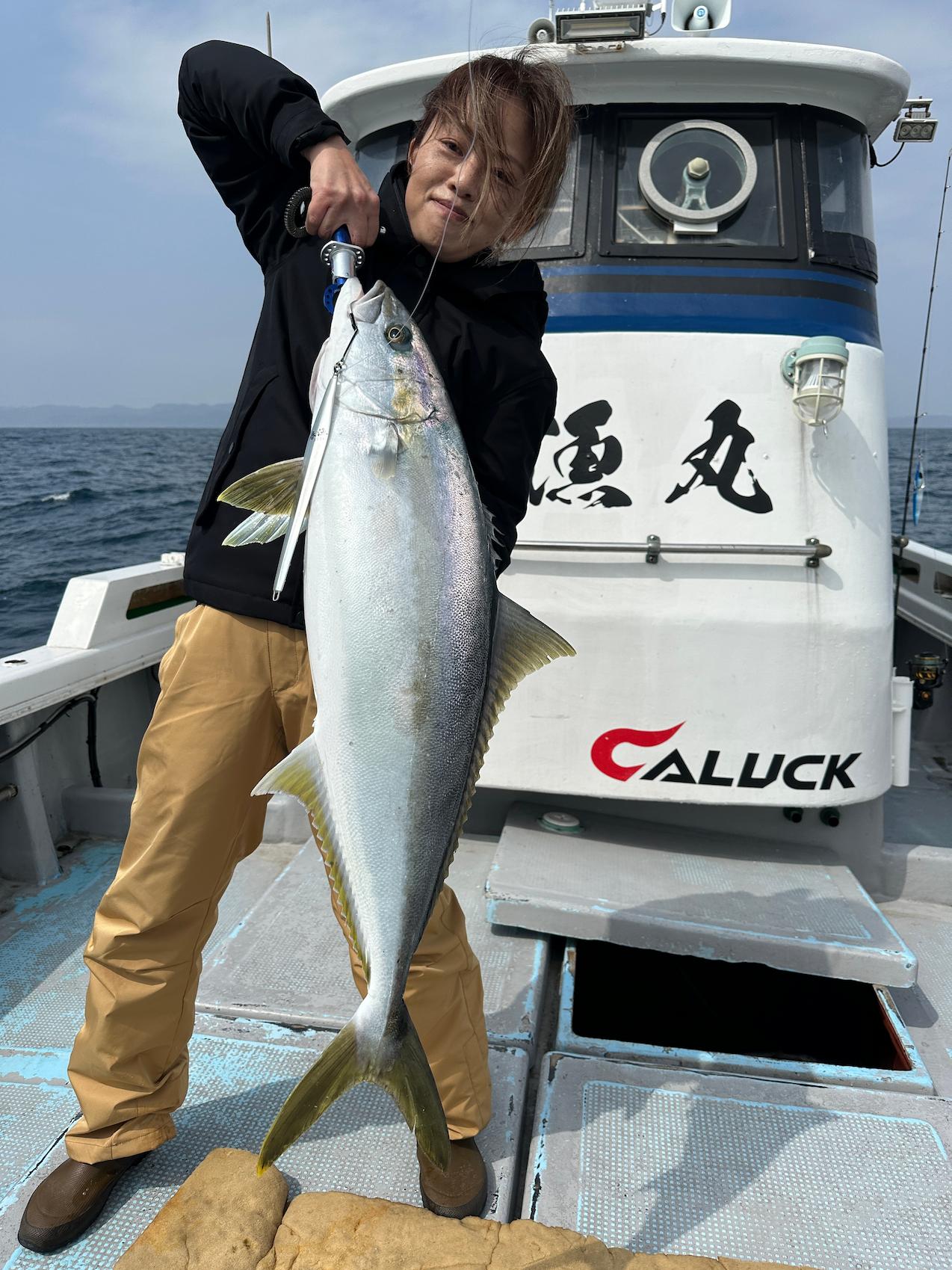
Veteran angler Midori Shiba, who has been in Tsushima for a while. As expected, she caught a sunfish quickly and easily.

Once again, the mahi were caught really well. The spring season has arrived for the Tsushima sea bream as well!

Haruyo Maru” is always a great help to us in Tsushima. Even if you take a beginner, the big captain and the young captain will give you a detailed lecture. The photo shows Captain Takuya (Waka). tel: 080-3970-4909
http://shunryomaru.com/
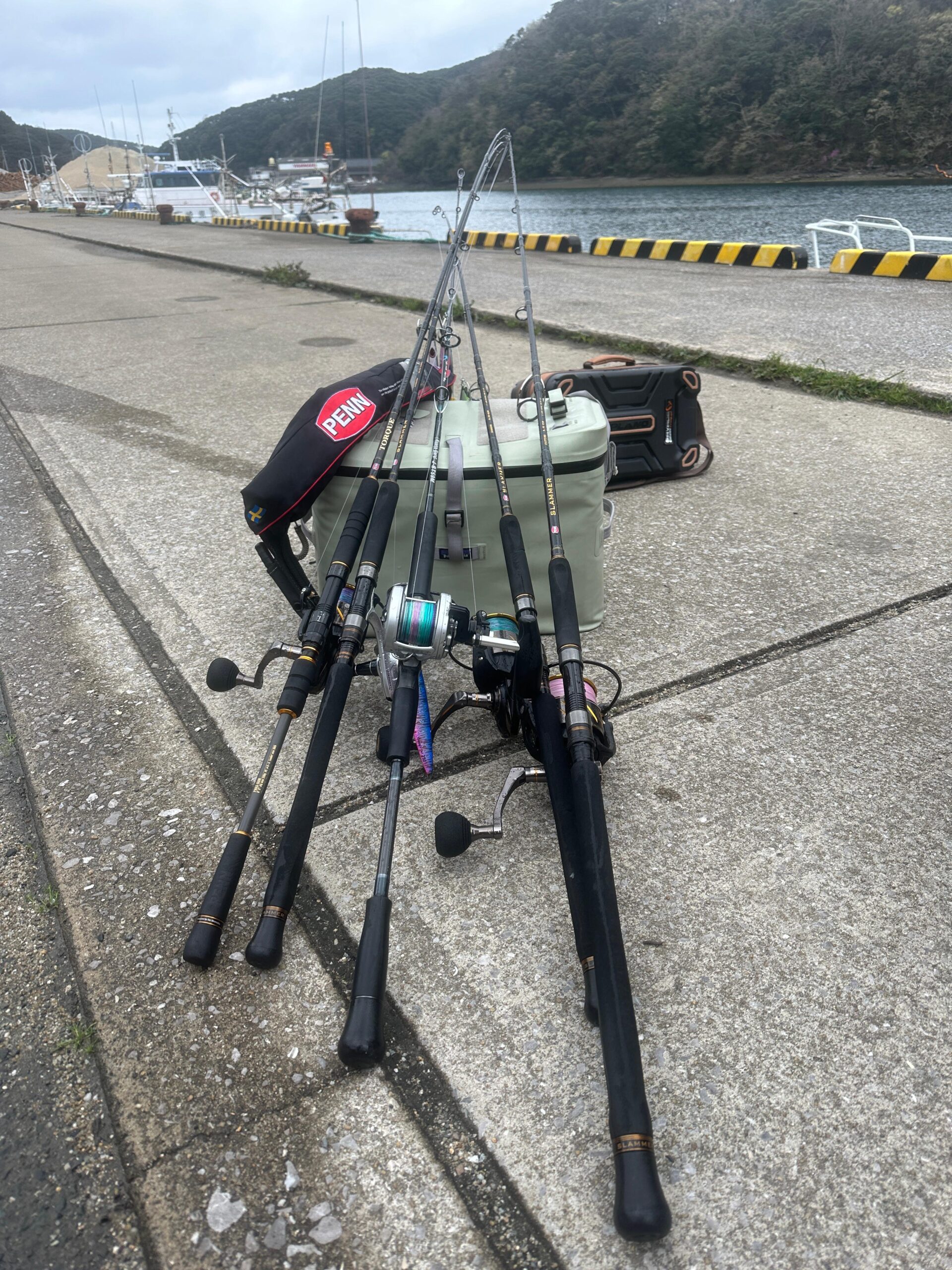
Jigging tackle
Rod: PENN Slammer PHK-63ML (proto-dip)
Slammer PHK-63M
Reel: PENN Authority 6500HS
Slammer DX6500
Line & Leader: Sunline X8 Full Contact #4 & Tsunagito #12, #14
Lure: K-FLAT Gummy 200g, 220g
Gummy-fat 180g, 200g, 235g
KEI Jig 200g, 235g
KEI Jig sharp 200g, 235g
Bait tackle
Test bait rod: 5.8MH class
Reel: PENN Fathom 2 2 speed 25NL
Line & Leader: Same as spinning tackle thereafter
Hook & Parts: Owner HyperWire #7, solid ring 6.5mm
JS-39 Blue Chaser 11/0, 9/0
Polarized lenses: Glenfield ZEQUE “STELTH
Reiko Ishinagi Morino’s jigging tackle
Rod: PENN TORQUE PHK-63ML KEI Hiramatsu model
Reel: Shimano Twin Power 8000
Line & Leader: PE No.4 & Tunagito 70lb
Lure: K-FLAT KEI-JIG 235g No.15 glow head
Tackle inquiry
Goldic is closed on Tuesdays TEL046(252)6010
HP address: https://www.goldic.net/
Kei Hiramatsu’s official blog “Iibusa Diary
https://kei-hiramatsu.com/
Kei Hiramatsu facebook
https://www.facebook.com/hiramatsu.kei.1
X(Twitter)
@keitanhiramatsu
YouTube
Kei Hiramatsu channel


